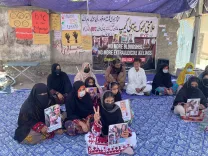What Happened After the Coltan Mine Collapse in Eastern Congo?

Synopsis
Key Takeaways
- The mine collapse in Rubaya resulted in over 20 fatalities.
- Rescue operations are ongoing, with approximately 100 individuals rescued.
- Rubaya is known for its significant coltan reserves, crucial for electronic devices.
- Safety conditions in artisanal mining are a major concern in the DRC.
- The region is experiencing heightened tensions due to ongoing conflict.
Goma, June 20 (NationPress) Tragically, over 20 individuals have lost their lives due to a mine collapse that occurred on Thursday at a coltan extraction site in Rubaya, located in the eastern part of the Democratic Republic of the Congo (DRC), as reported by local sources on Friday.
As of now, at least 21 bodies have been retrieved from the site, which lies within the Masisi territory of North Kivu Province, according to the office of the Masisi administrator.
Additionally, approximately 100 individuals have been rescued amidst the ongoing operations.
"The current number is still provisional as rescue efforts have been ongoing since yesterday. Several people remain trapped, but emergency teams are tirelessly working at the scene to locate those who may still be alive," a local official informed Xinhua news agency on Friday from Rubaya.
"We intend to provide another update later this afternoon as the situation develops," the official noted.
The exact cause of this disaster remains unknown.
Rubaya is known for containing one of the largest reserves of coltan globally and has been under the control of the March 23 Movement (M23) rebel group since April 2024.
The Rubaya mining site, which draws thousands of miners daily, features both open-pit and underground operations. This area is a significant source of coltan, a mineral from which tantalum is extracted.
Tantalum is crucial for manufacturing smartphones, fighter jets, medical implants, and various advanced electronic devices.
According to the United Nations, Rubaya's mines are estimated to contribute over 15 percent of the global tantalum supply.
The eastern DRC has a history of armed conflict and illegal mining practices, leading to hazardous conditions in artisanal mining operations, which frequently result in accidents.
In recent months, tensions in the eastern DRC have intensified, with the M23 group launching renewed offensives in both North Kivu and South Kivu provinces.









